A New Hybrid Hierarchical Roadside Unit Deployment Scheme Combined with Parking Cars
Abstract
1. Introduction
2. Related Work
3. Backgrounds
Mobile Mode Analysis for Traffic Multi-Agent
4. Scenario Description and Basic Definition
4.1. The Concept of the t-RSU and Its Mechanism
| Algorithm 1: t-RSU Score |
| Input: Output: the outcome score of weighted S(SCA, ECA), S(RCA) as 0 do then End End |
- SCA represents the self-coverage area of the parked car, and are the partitions of the self-coverage area.
- ECA is the existing coverage area covered by other temporary t-RSUs; are the partitions of the temporary coverage area.
- RCA is the redundant area that overlaps between the currently parked car and other temporary t-RSUs. Meanwhile, since the overlapped area is 3D in the real world (due to the existence of underground and above-ground garages), here we use for calculating it by projecting the area in the 2D map.
- and are the coefficients for the S(SCA, ECA) and S(RCA), respectively, which can be used to determine the score and set the threshold for whether a new parked car should become a t-RSU.
4.2. Optimize RSUs Deployment with Already-Existing t-RSUs
Branch and Bound Algorithm
5. Simulation Analyses and Results
5.1. Simulation Analyses
- Vehicle coverage ratio, which is the ratio between the total number of vehicles that come in contact with the RSUs or t-RSUs and the total number of vehicles in the confined area.
- Point-to-point connectivity, which is the reflection of the reachability between two random positions in the area.
5.2. Results
6. Conclusions and Future Work
6.1. Conclusions
6.2. Future Works
Author Contributions
Funding
Institutional Review Board Statement
Informed Consent Statement
Data Availability Statement
Conflicts of Interest
References
- Wang, L.; Zhang, X. Anomaly Detection for Automated Vehicles Integrating Continuous Wavelet Transform and Convolutional Neural Network. Appl. Sci. 2023, 13, 5525. [Google Scholar] [CrossRef]
- Ding, Y.; Wang, C.; Xiao, L. A static-node assisted adaptive routing protocol in vehicular networks. In Proceedings of the Fourth ACM International Workshop on Vehicular Ad Hoc Networks, Quebec, QC, Canada, 10 September 2007; pp. 59–68. [Google Scholar]
- Lochert, C.; Scheuermann, B.; Wewetzer, C.; Lübke, A.; Mauve, M. Data aggregation and roadside unit placement for a vanet traffic information system. In Proceedings of the International Workshop on VehiculAr Inter-NETworking, San Francisco, CA, USA, 15 September 2008. [Google Scholar]
- Trullols, O.; Fiore, M.; Casetti, C.; Chiasserini, C.F.; Barcelo Ordinas, J.M. Planning roadside infrastructure for information dissemination in intelligent transportation systems. Comput. Commun. 2010, 33, 432–442. [Google Scholar] [CrossRef]
- Barrachina, J.; Garrido, P.; Fogue, M.; Martinez, F.J.; Cano, J.C.; Calafate, C.T.; Manzoni, P. Road Side Unit Deployment: A Density-Based Approach. IEEE Intell. Transp. Syst. Mag. 2013, 5, 30–39. [Google Scholar] [CrossRef]
- Gao, Z.; Chen, D.; Cai, S.; Wu, H.-C. Optimal and greedy algorithms for the one-dimensional RSU deployment problem with new model. IEEE Trans. Veh. Technol. 2018, 67, 7643–7657. [Google Scholar] [CrossRef]
- Liu, C.; Huang, H.; Du, H.; Jia, X. Optimal RSUs placement with delay bounded message dissemination in vehicular networks. J. Comb. Optim. 2017, 33, 1276–1299. [Google Scholar] [CrossRef]
- Silva, T.R.; Da Correia, T.S.; Sarubbi, J.F.M.; Martins, F.V.C. Roadside units deployment in hybrid VANETs with synchronous communication. In Proceedings of the 2018 IEEE 87th Vehicular Technology Conference (VTC Spring), Porto, Portugal, 3–6 June 2018; pp. 1–5. [Google Scholar]
- Yang, H.; Jia, Z.; Xie, G. Delay-bounded and cost-limited RSU deployment in Urban Vehicular Ad Hoc Networks. Sensors 2018, 18, 2764. [Google Scholar] [CrossRef] [PubMed]
- Mokhtari, S.; Mirjalily, G.; Silva, C.M.; Sarubbi, J.F.M.; Nogueira, J.M.S. The Deployment of roadside units in vehicular networks based on the V2I connection duration. In Proceedings of the 2020 16th International Conference on Wireless and Mobile Computing, Networking and Communications (WiMob), Thessaloniki, Greece, 12–14 October 2020. [Google Scholar]
- Moura, D.L.L.; Cabral, R.S.; Sales, T.; Aquino, A.L.L. An evolutionary algorithm for roadside unit deployment with betweenness centrality preprocessing. Futur. Gener. Comput. Syst. 2018, 88, 776–784. [Google Scholar] [CrossRef]
- Jiang, L.; Molnár, T.G.; Orosz, G. On the deployment of V2X roadside units for traffic prediction. Transp. Res. Part C Emerg. Technol. 2021, 129, 103238. [Google Scholar] [CrossRef]
- Silva, C.M.; Pitangui, C.G.; Miguel, E.C.; Santos, L.A.; Torres, K.B.V. Gamma-Reload Deployment: Planning the communication infrastructure for serving streaming for connected vehicles. Veh. Commun. 2020, 21, 100197. [Google Scholar] [CrossRef]
- Feng, Z.; Li, K.; Li, B. A spectral clustering-based deployment strategy for roadside units in vehicular edge computing environments. Ad Hoc Netw. 2024, 158, 103483. [Google Scholar] [CrossRef]
- Liu, N.; Liu, M.; Lou, W.; Chen, G.; Cao, J. PVA in VANETs: Stopped cars are not silent. In Proceedings of the 2011 Proceedings IEEE INFOCOM, Shanghai, China, 10–15 April 2011; pp. 431–435. [Google Scholar]
- Sommer, C.; Eckhoff, D.; Dressler, F. IVC in cities: Signal attenuation by buildings and how parked cars can improve the situation. IEEE Trans. Mob. Comput. 2014, 13, 1733–1745. [Google Scholar] [CrossRef]
- Reis, A.B.; Sargento, S.; Tonguz, O.K. Parked Cars are Excellent Roadside Units. IEEE Trans. Intell. Transp. Syst. 2017, 18, 2490–2502. [Google Scholar] [CrossRef]
- Reis, A.B.; Sargento, S.; Tonguz, O.K. Smarter Cities with Parked Cars as Roadside Units. IEEE Trans. Intell. Transp. Syst. 2018, 19, 2338–2352. [Google Scholar] [CrossRef]
- Zeng, J.; Ren, Y.; Wang, K.; Hu, X.; Li, J. Spatio-Temporal-Attention-Based Vehicle Trajectory Prediction Considering Multi-Vehicle Interaction in Mixed Traffic Flow. Appl. Sci. 2024, 14, 161. [Google Scholar] [CrossRef]
- Zhao, W.; Ngoduy, D.; Shepherd, S.; Liu, R.; Papageorgiou, M. A platoon based cooperative eco-driving model for mixed automated and human-driven vehicles at a signalised intersection. Transp. Res. Part C Emerg. Technol. 2018, 95, 802–821. [Google Scholar] [CrossRef]
- Ou, D.; Yang, Y.; Xue, L.; Dong, D. Optimal Connectivity-Based Deployment of Roadside Units for Vehicular Networks in Urban Areas. Transp. Res. Rec. J. Transp. Res. Board 2016, 2559, 46–56. [Google Scholar] [CrossRef]
- Badescu, V. Dynamic model of a complex system including PV cells, electric battery, electrical motor and water pump. Energy 2003, 28, 1165–1181. [Google Scholar] [CrossRef]
- Yoshida, S.; Isayama, H.; Koike, K. Techniques of metallic stent placement for malignant colorectal obstruction. Gastroenterol. Endosc. 2013, 55, 306–315. [Google Scholar]
- Wierzbicki, A.P. A methodological guide to multiobjective optimization. In Optimization Techniques; Springer: Berlin/Heidelberg, Germany, 1980; pp. 99–123. [Google Scholar]
- Tomita, E.; Kameda, T. Erratum: An efficient branch-and-bound algorithm for finding a maximum clique with computational experiments. J. Glob. Optim. 2007, 37, 95–111. [Google Scholar] [CrossRef]
- Tonguz, O.K.; Viriyasitavat, W.; Bai, F. Modeling urban traffic: A cellular automata approach. IEEE Commun. Mag. 2009, 47, 142–150. [Google Scholar] [CrossRef]
- Song, J.; Wu, Y.; Xu, Z.; Lin, X. Research on car-following model based on SUMO. In Proceedings of the 7th IEEE/International Conference on Advanced Infocomm Technology, Fuzhou, China, 14–16 November 2014; pp. 47–55. [Google Scholar]
- Erdmann, J. SUMO’s Lane-changing model. Lect. Notes Control Inf. Sci. 2015, 13, 105–123. [Google Scholar]
- Xiong, Y.; Ma, J.; Wang, W.; Niu, J. Optimal roadside gateway deployment for VANETs. Prz. Elektrotechniczny 2012, 88, 273–276. [Google Scholar]
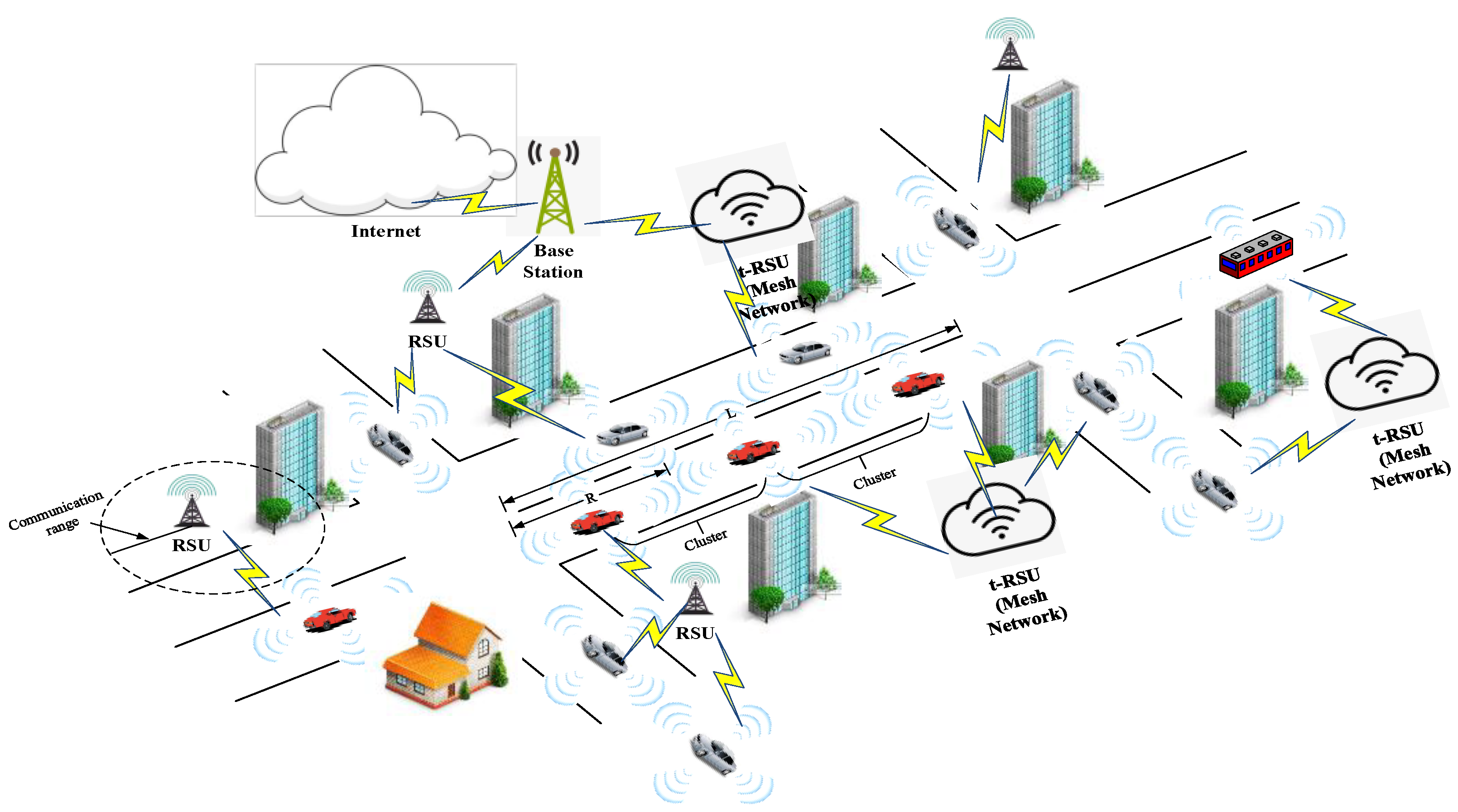
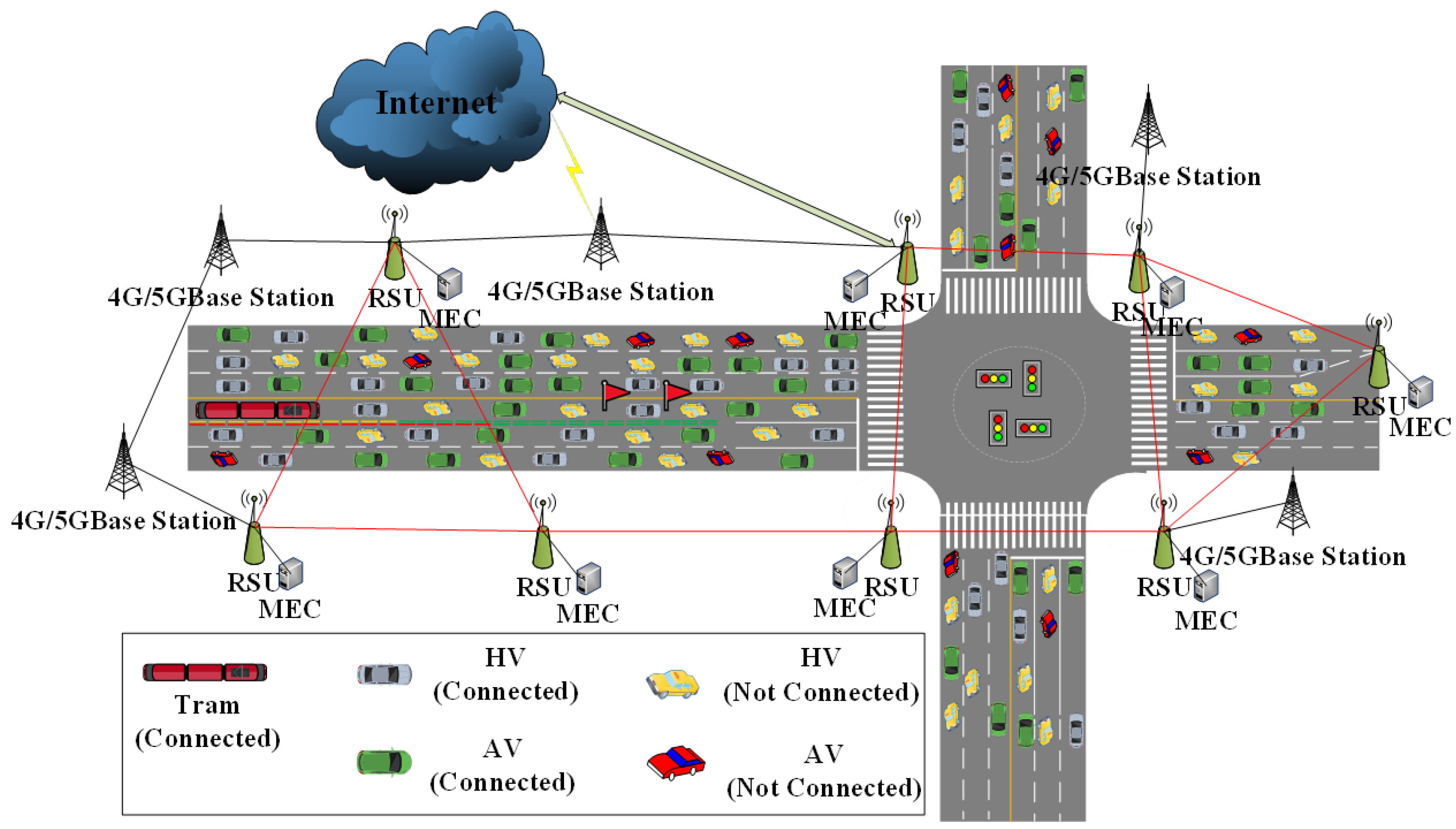
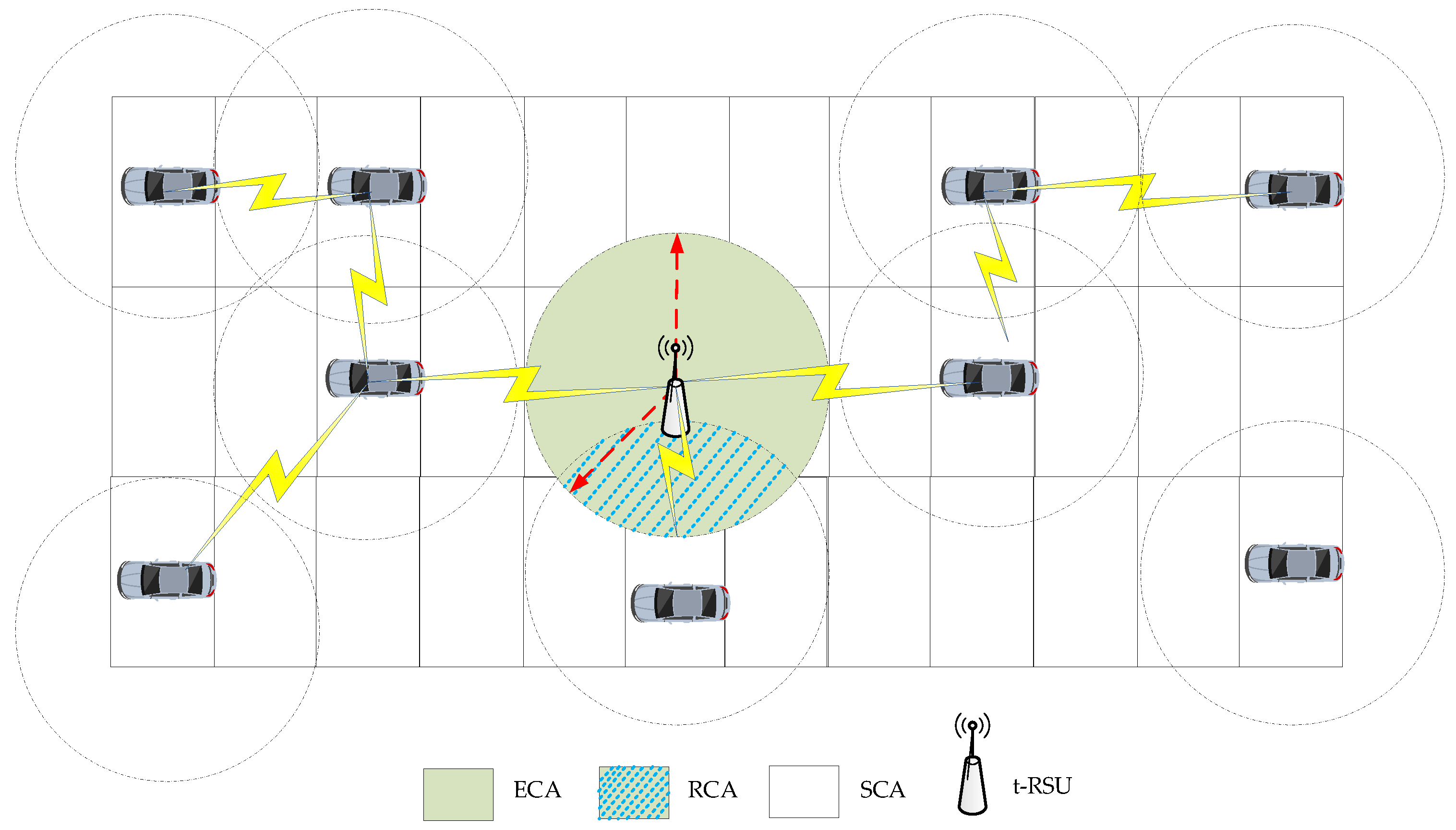
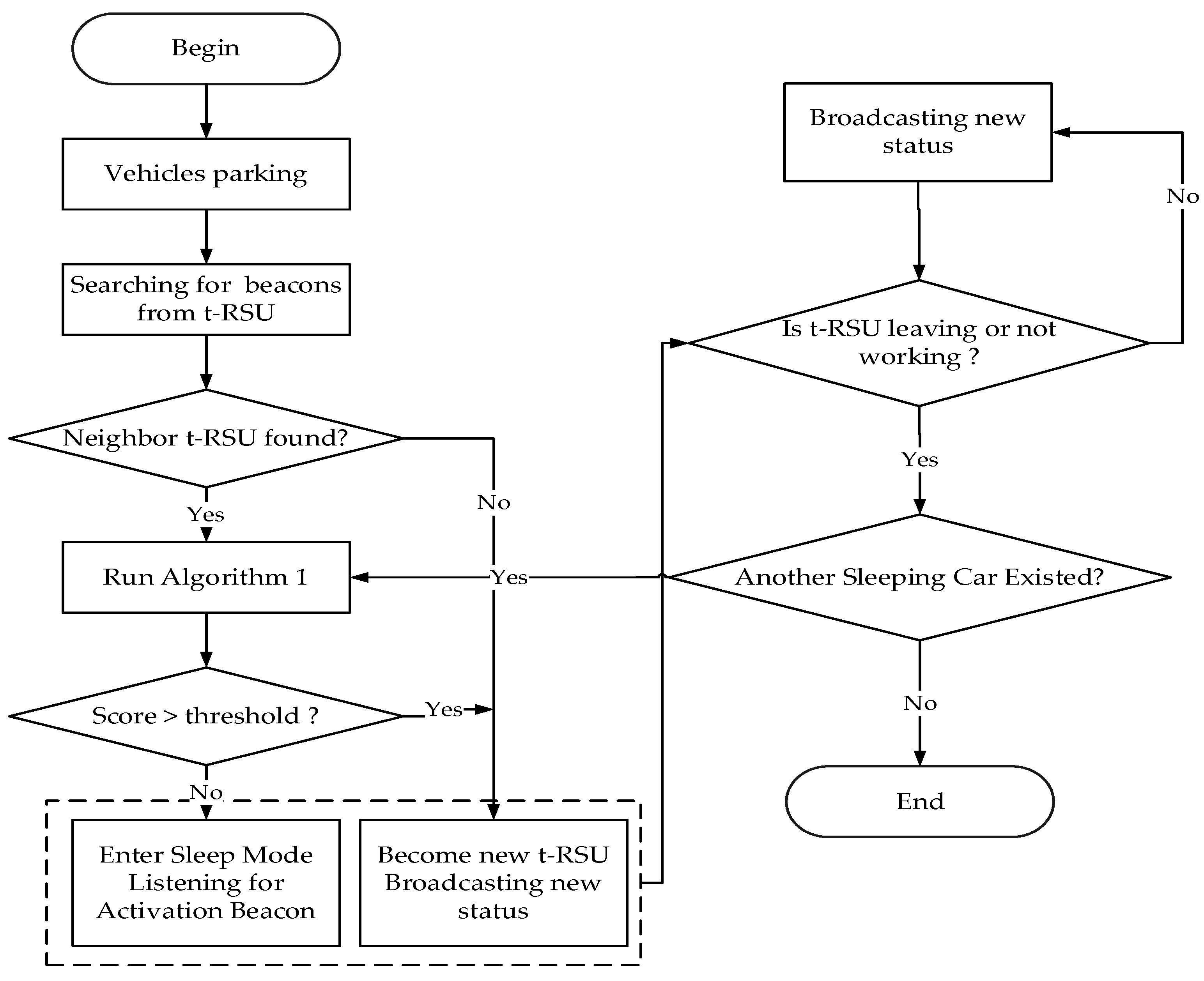
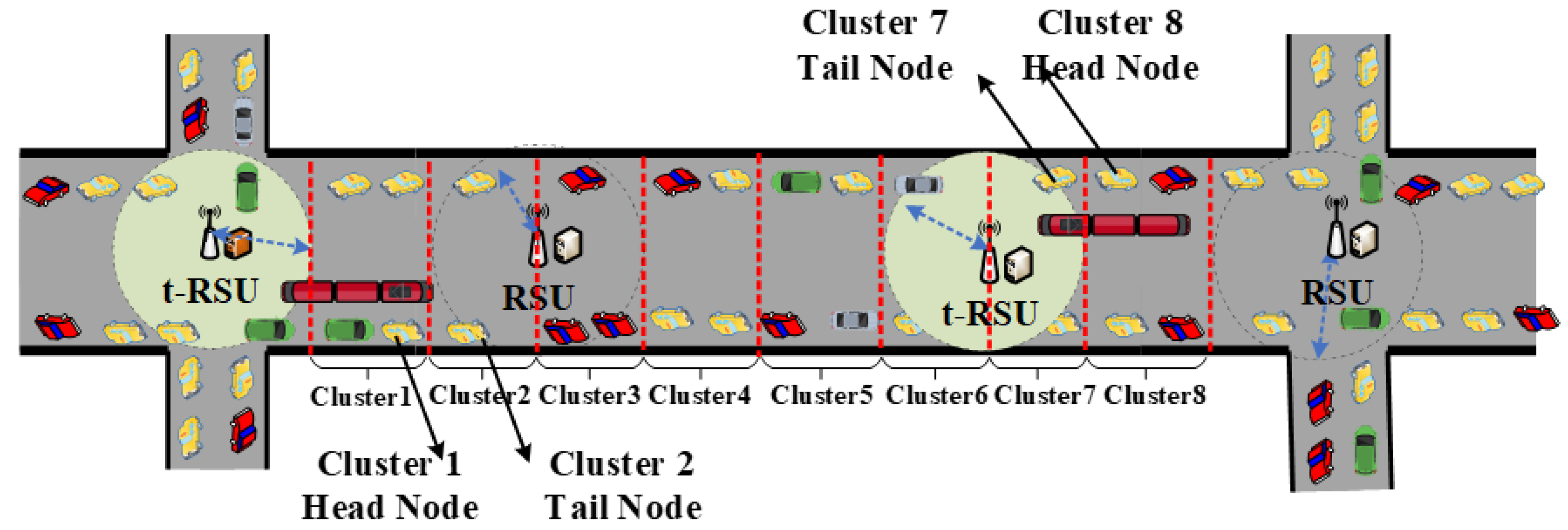
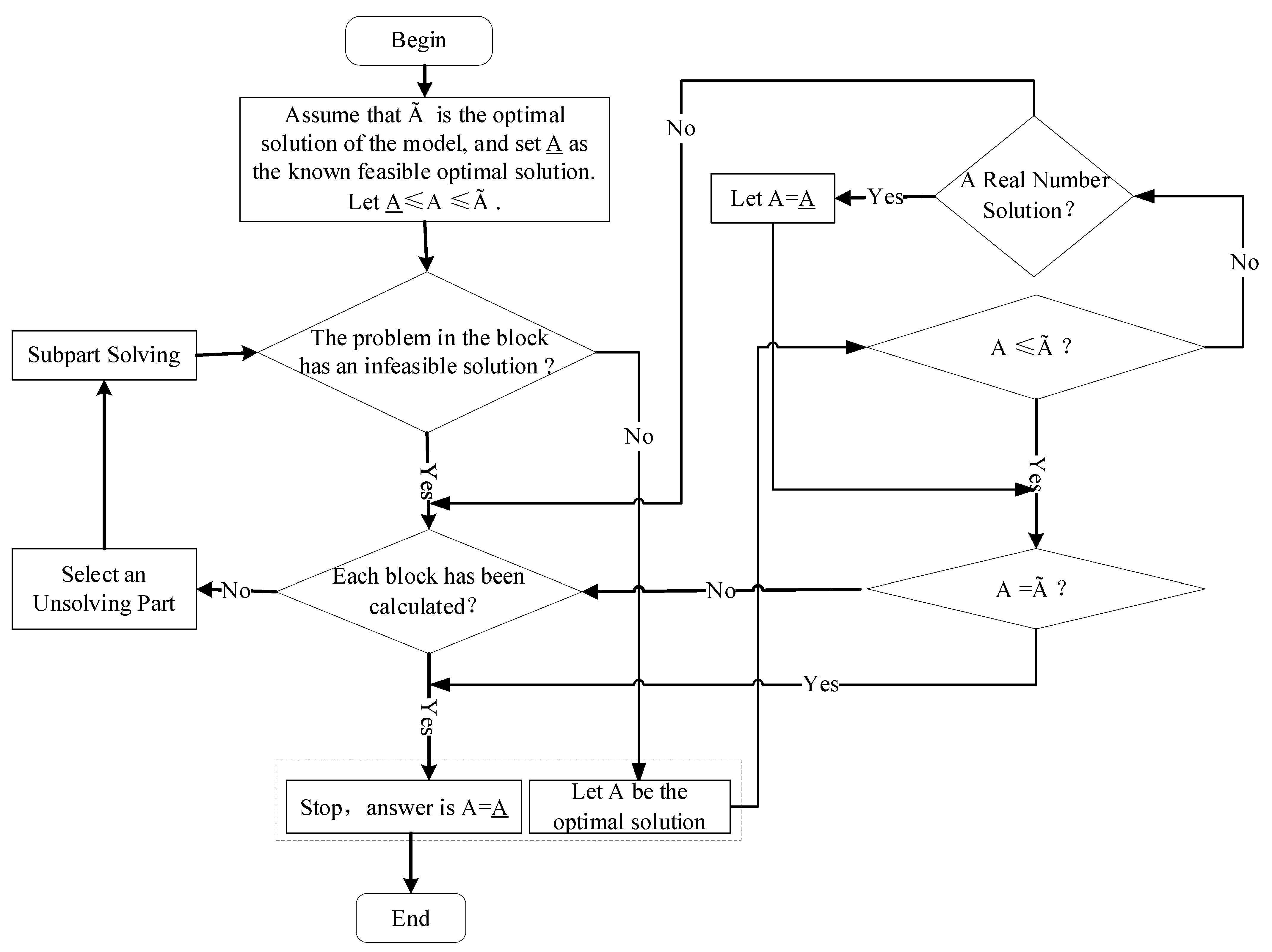
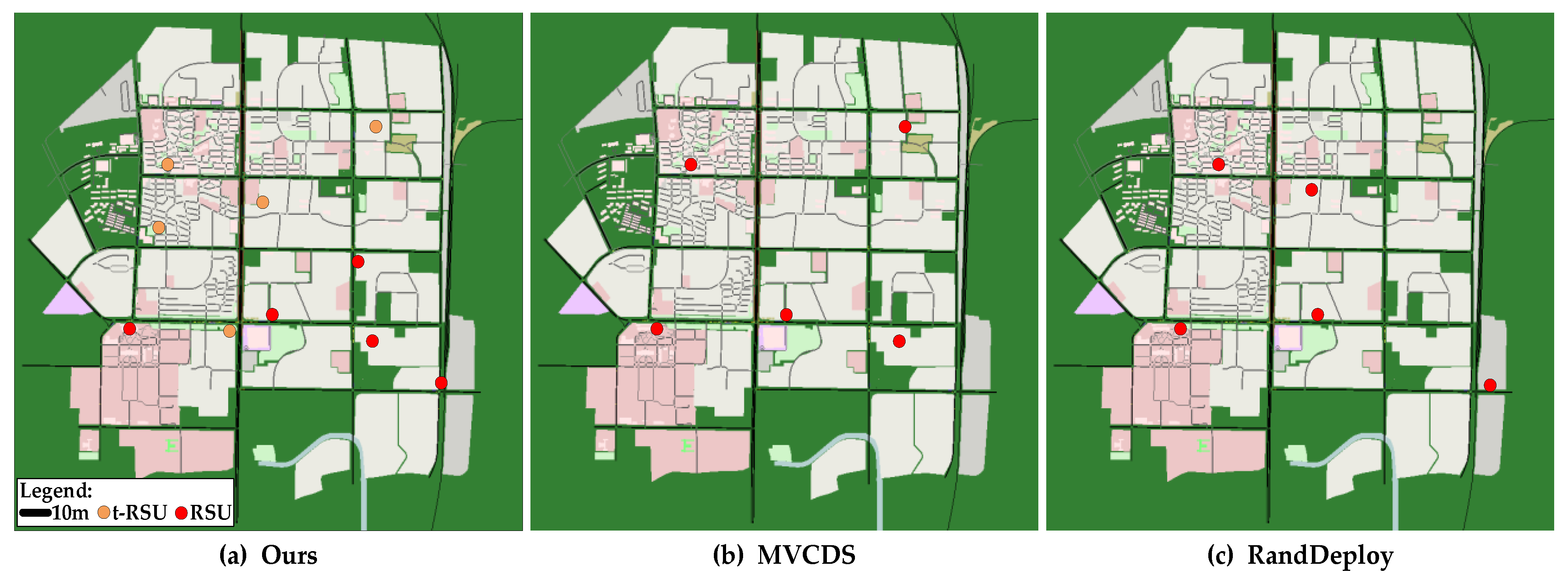


| Step | Description |
|---|---|
| Step 1 | If the problem is to minimize the solution, the current optimal solution is set as . |
| Step 2 | According to the branch rule, a node is selected from the nodes that have not been searched at present, and it is divided into several new nodes in the next level of the node. |
| Step 3 | Calculate the lower limit of each new branch node. |
| Step 4 | If either of the following conditions is satisfied, it is not considered: 1. The node does not contain a feasible solution. 2. The lower limit of the node is greater than or equal to the current A value. 3. If a feasible solution with a minimum lower limit value in the node is found, it is necessary to further compare the feasible solution with the current A value. If the latter is small, it needs to be discarded. |
| Step 5 | Determine whether there are nodes that have not yet been searched. If there are, step 2 is performed. If not, the calculation is stopped, and the optimal solution is obtained. |
| Parameter | Value |
|---|---|
| Density of Vehicles (veh/km2) | 37.5, 112.5, 187.5 |
| Total Given Cost | 5 units |
| Simulated Area | Downtown area of Shanghai, China |
| Communication Range | 100 m, 300 m, 500 m |
| Traffic Data Source | Historical traffic data in Shanghai |
| Car-Following Model | CarFollowingModel-Krauss [27] |
| Lane-Changing Model | LC2013 [28] |
Disclaimer/Publisher’s Note: The statements, opinions and data contained in all publications are solely those of the individual author(s) and contributor(s) and not of MDPI and/or the editor(s). MDPI and/or the editor(s) disclaim responsibility for any injury to people or property resulting from any ideas, methods, instructions or products referred to in the content. |
© 2024 by the authors. Licensee MDPI, Basel, Switzerland. This article is an open access article distributed under the terms and conditions of the Creative Commons Attribution (CC BY) license (https://creativecommons.org/licenses/by/4.0/).
Share and Cite
Li, H.; Ji, Y.; Wang, Z. A New Hybrid Hierarchical Roadside Unit Deployment Scheme Combined with Parking Cars. Appl. Sci. 2024, 14, 7032. https://doi.org/10.3390/app14167032
Li H, Ji Y, Wang Z. A New Hybrid Hierarchical Roadside Unit Deployment Scheme Combined with Parking Cars. Applied Sciences. 2024; 14(16):7032. https://doi.org/10.3390/app14167032
Chicago/Turabian StyleLi, Hongming, Yuqing Ji, and Ziwei Wang. 2024. "A New Hybrid Hierarchical Roadside Unit Deployment Scheme Combined with Parking Cars" Applied Sciences 14, no. 16: 7032. https://doi.org/10.3390/app14167032
APA StyleLi, H., Ji, Y., & Wang, Z. (2024). A New Hybrid Hierarchical Roadside Unit Deployment Scheme Combined with Parking Cars. Applied Sciences, 14(16), 7032. https://doi.org/10.3390/app14167032






